Abstract
The course of Leishmania tropica infection in BALB/c and B6D2 mice has been followed after injection of the parasite at different sites. The effect of interruption of lymphatic drainage from the inoculation site has also been examined. In both strains of mice, more severe disease resulted from infection induced in the shaved rump, as compared to infection in the footpad. The removal of the popliteal lymph node prior to footpad infection, caused a considerable exacerbation of the disease. Such increased severity and associated with an initial inhibition of the induction of delayed-type hypersensitivity and a delay in the emergence of acquired resistance. Lymph node removal did not however compromise the effector arm of the acquired immune response, nor prevent the eventual suppression of delayed hypersensitivity that has been shown to occur in the BALB/c, during leishmanial infection.
Full text
PDF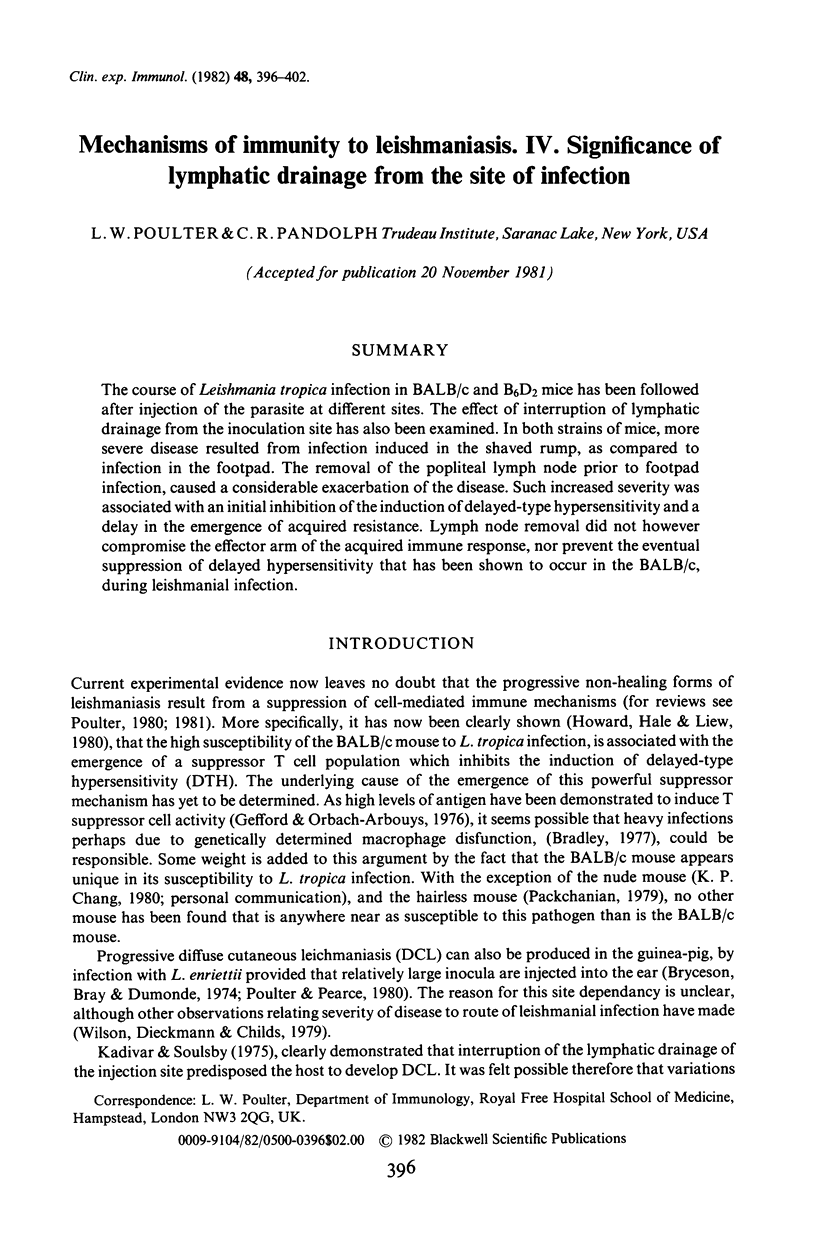
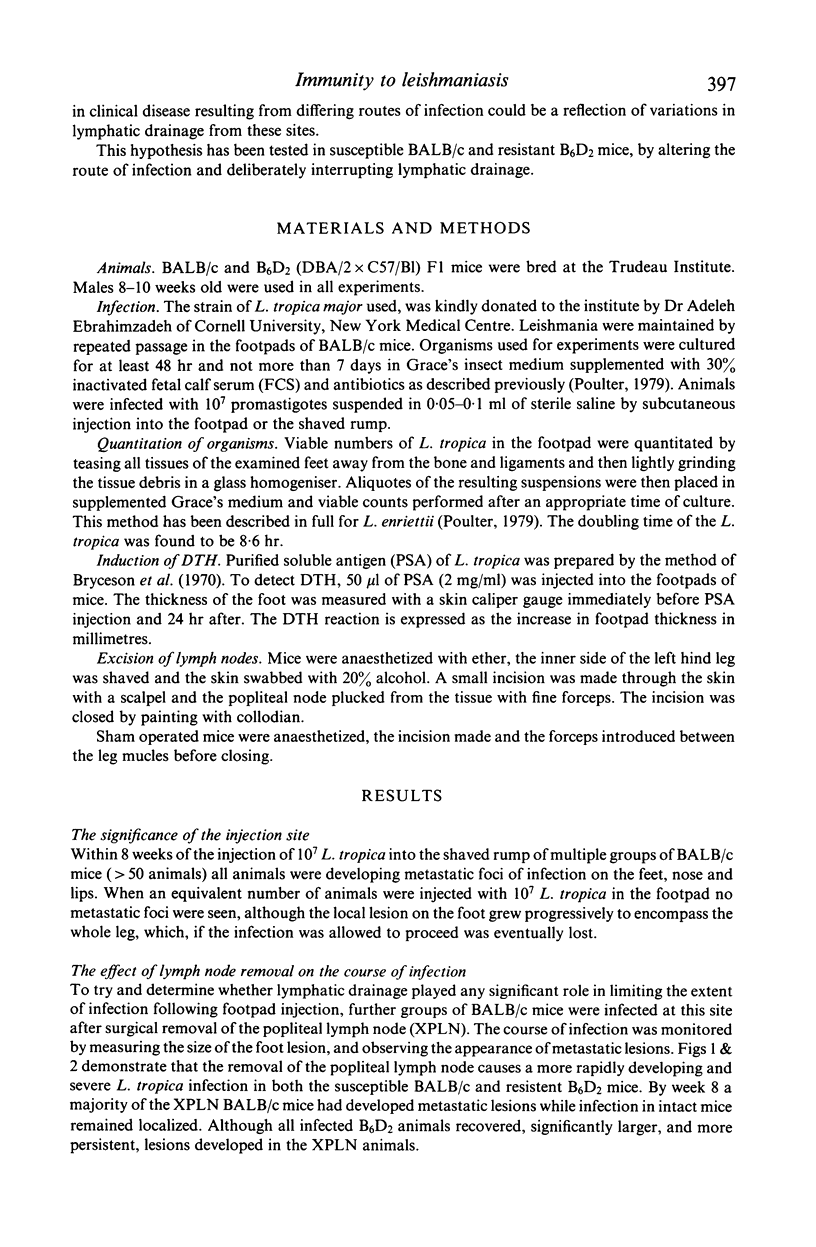
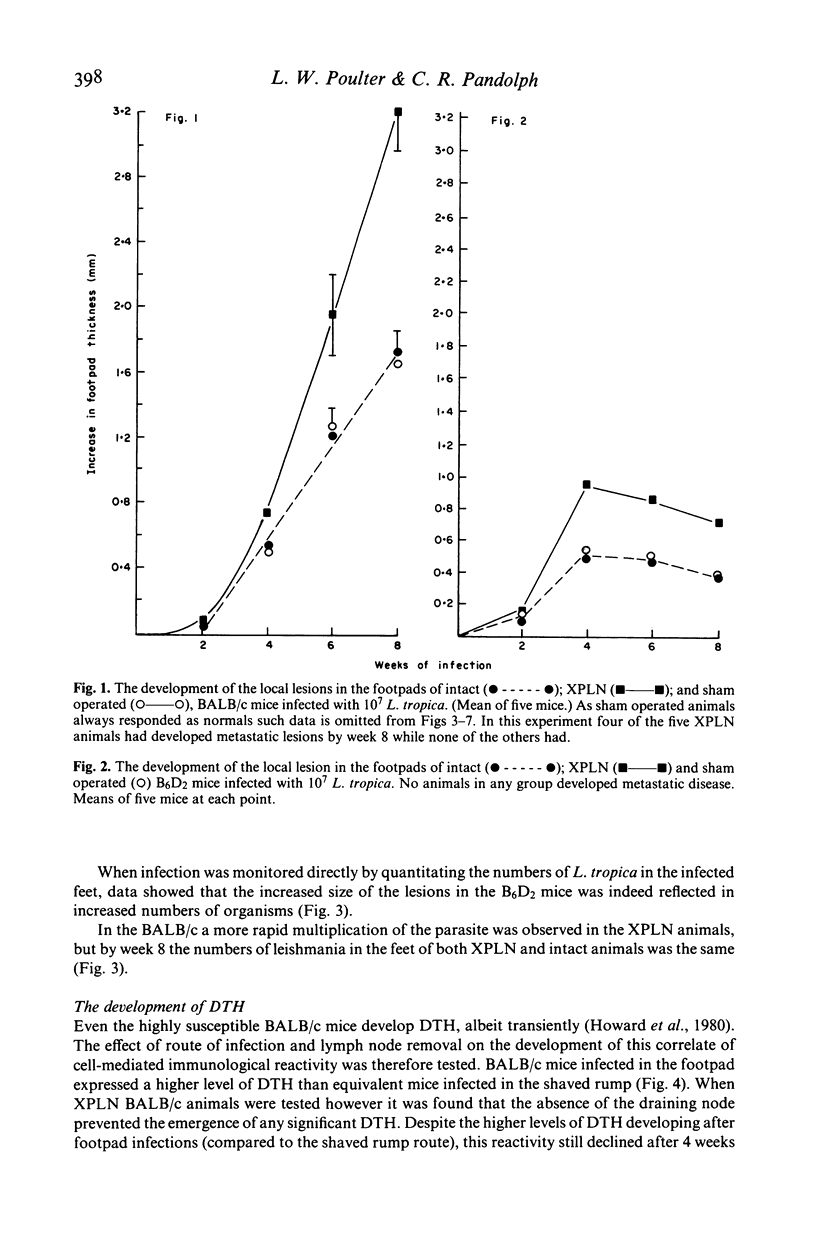
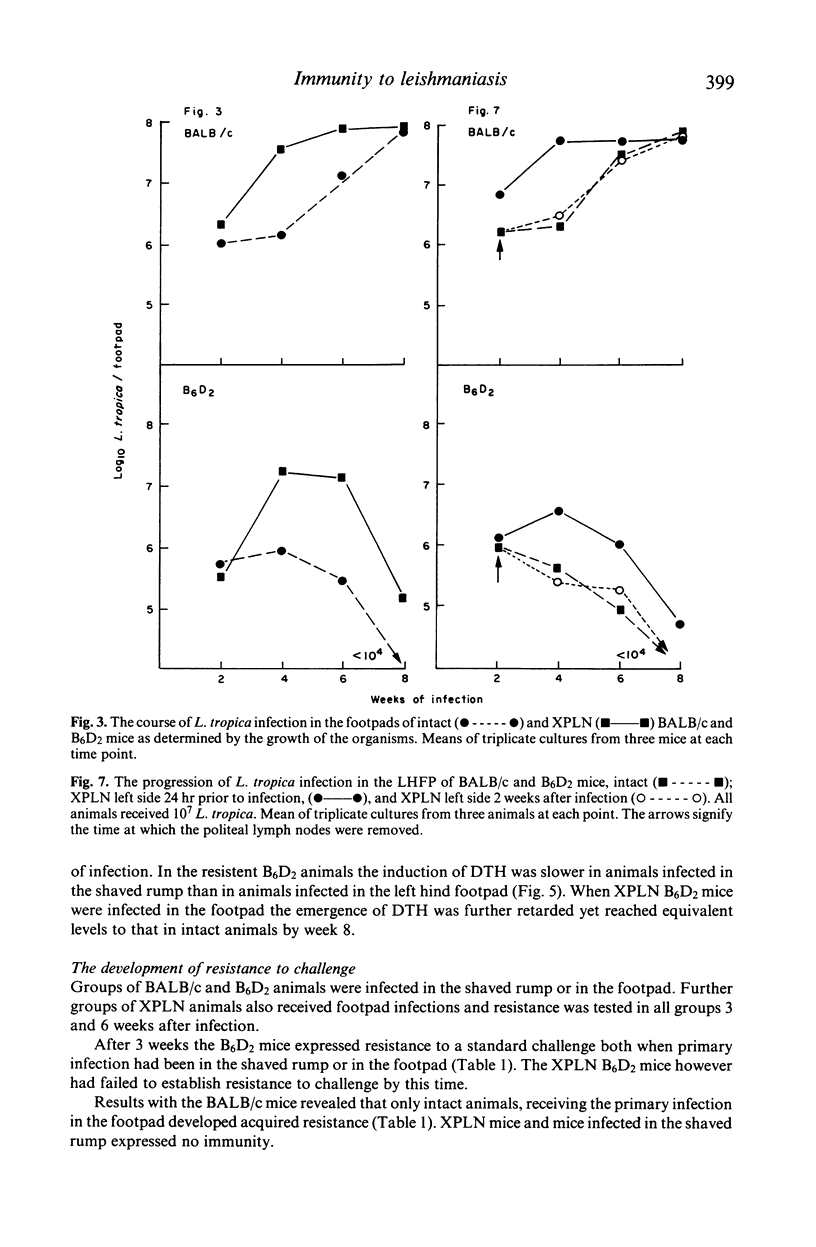
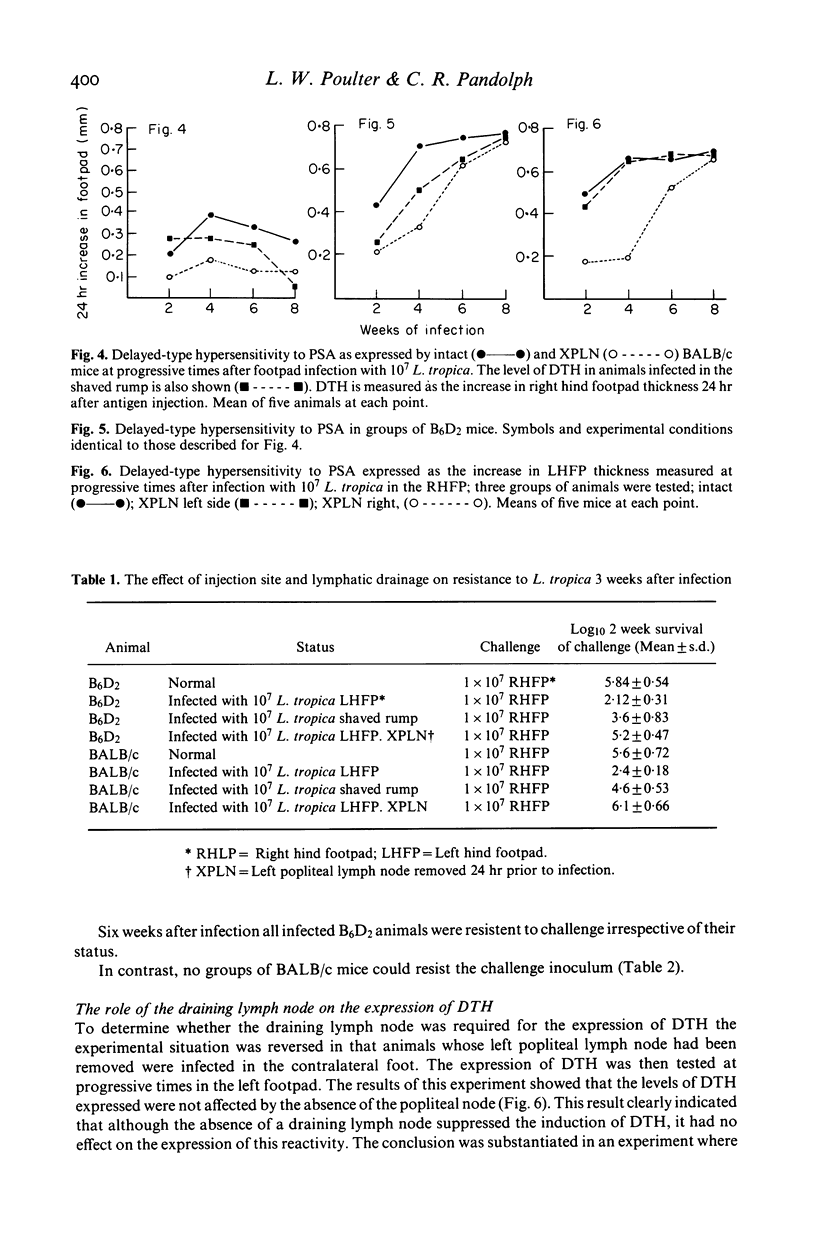
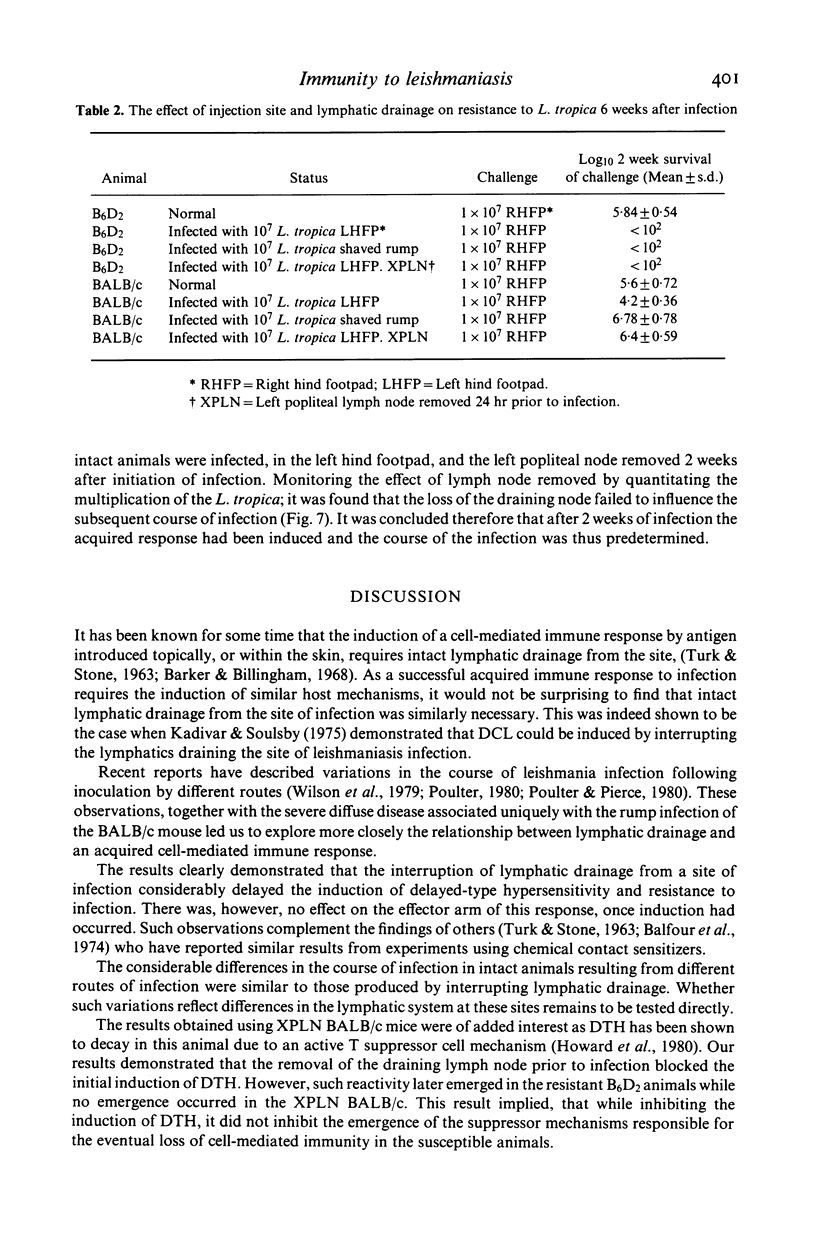
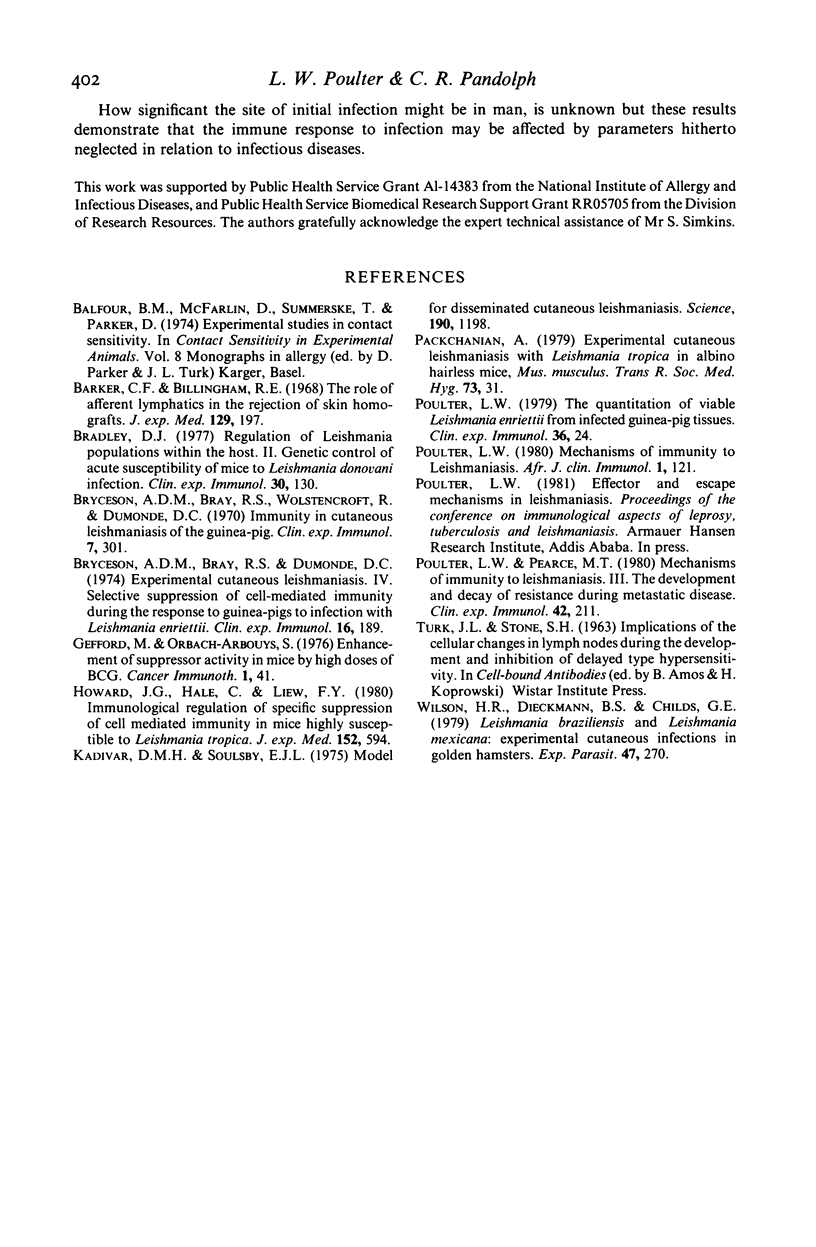
Selected References
These references are in PubMed. This may not be the complete list of references from this article.
- Barker C. F., Billingham R. E. The role of afferent lymphatics in the rejection of skin homografts. J Exp Med. 1968 Jul 1;128(1):197–221. doi: 10.1084/jem.128.1.197. [DOI] [PMC free article] [PubMed] [Google Scholar]
- Bradley D. J. Regulation of Leishmania populations within the host. II. genetic control of acute susceptibility of mice to Leishmania donovani infection. Clin Exp Immunol. 1977 Oct;30(1):130–140. [PMC free article] [PubMed] [Google Scholar]
- Bryceson A. D., Bray R. S., Dumonde D. C. Experimental cutaneous leishmaniasis. IV. Selective suppression of cell-mediated immunity during the response of guinea-pigs to infection with Leishmania enriettii. Clin Exp Immunol. 1974 Feb;16(2):189–202. [PMC free article] [PubMed] [Google Scholar]
- Bryceson A. D., Bray R. S., Wolstencroft R. A., Dumonde D. C. Immunity in cutaneous leishmaniasis of the guinea-pig. Clin Exp Immunol. 1970 Sep;7(3):301–341. [PMC free article] [PubMed] [Google Scholar]
- Howard J. G., Hale C., Liew F. Y. Immunological regulation of experimental cutaneous leishmaniasis. III. Nature and significance of specific suppression of cell-mediated immunity in mice highly susceptible to Leishmania tropica. J Exp Med. 1980 Sep 1;152(3):594–607. doi: 10.1084/jem.152.3.594. [DOI] [PMC free article] [PubMed] [Google Scholar]
- Kadivar D. M., Soulsby E. J. Model for disseminated cutaneous leishmaniasis. Science. 1975 Dec 19;190(4220):1198–1200. doi: 10.1126/science.1198104. [DOI] [PubMed] [Google Scholar]
- Packchanian A. Experimental cutaneous leishmaniasis with Leishmania tropica in albino hairless mice, Mus musculus. Trans R Soc Trop Med Hyg. 1979;73(1):31–36. doi: 10.1016/0035-9203(79)90125-1. [DOI] [PubMed] [Google Scholar]
- Poulter L. W. The quantification of viable Leishmania enriettii from infected guinea-pig tissues. Clin Exp Immunol. 1979 Apr;36(1):24–29. [PMC free article] [PubMed] [Google Scholar]
- Wilson H. R., Dieckmann B. S., Childs G. E. Leishmania braziliensis and Leishmania mexicana: experimental cutaneous infections in golden hamsters. Exp Parasitol. 1979 Apr;47(2):270–283. doi: 10.1016/0014-4894(79)90079-1. [DOI] [PubMed] [Google Scholar]


